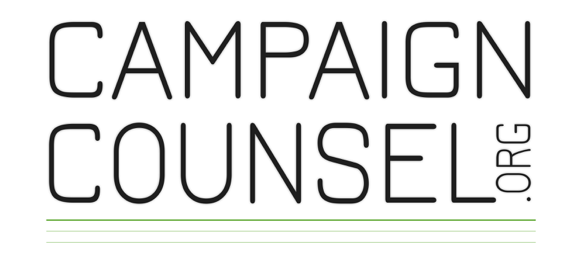Overcoming Obstacles to Your Capital Campaign: Steel Wall or Flimsy Screen Door?
I recently started reading Steven Pressfield’s book The War of Art. In summary, it’s a how-to on breaking through obstacles that keep us from pursuing our dreams. Pressfield lumps these obstacles – procrastination, timing, finances, etc. – into one category that he calls resistance. And, unfortunately, resistance is present everywhere.
Before starting this book, I never gave much thought to the obstacles that quash my better intentions. I just let them do their thing and accepted or ignored the guilt they provoked.
I don’t find it difficult to initiate and complete most of my work and family-related tasks. However, starting or completing menial chores around the house, my exercise routine, or my creative interests can be met with limitless resistance. I can come up with ten reasons to postpone or even forego my morning run within two minutes of waking up!
Resistance and Capital Campaigns
Pressfield’s book has me thinking about how resistance impacts nonprofits relative to capital campaigns. Why is it so difficult for organizations to initiate or complete the process? Here’s a quick list of some of the more common capital campaign barriers we hear about:
I don’t know where or how to begin.
My board and staff aren’t helping.
I’m afraid of failure.
We don’t know how to solicit big donations.
Our nonprofit isn’t well known.
We don’t have the right connections.
I have more pressing responsibilities.
These barriers are real. I completely understand how they affect capital campaigns. And even though I’m only one-third through Pressfield’s book, his use of the word “resistance” has provided me with new insight into barriers. For example, when I wake up with a stiff back, instead of convincing myself to blow off running, I can say, “Nope, I recognize this reason to avoid my run as resistance, I know I can overcome it with some stretching, and I won’t let it keep me from my goals.” Identifying resistance for what it is, is helping me defeat it. Identifying your areas of resistance, the barriers keeping you from moving forward, will help you too.
Overcoming Resistance
First, we need to understand that resistance is not an impenetrable obstacle. It’s not a steel wall. We may have imagined it into a steel wall, but it’s more like a flimsy screen door. We can get through it, sometimes alone, but certainly with a little help. If you don't know where or how to begin, call a nonprofit leader in your area who has completed a capital campaign and ask to talk with them about the process they went through, or contact a capital campaign consultant who can walk through it with you and answer your questions. At CampaignCounsel.org we are always willing to talk with nonprofit leaders as they consider the possibilities.
Second, we need to treat resistance as an ally. Whenever we encounter something new, let’s say a game, we listen intently to the rules and goals so we can align them with our personal skills and desires. That’s good for learning new games and for capital campaigns! We should take time to assess any new endeavor. Our senses should be heightened. We should be excited and maybe even a little scared.
Third, we should take little steps. For most nonprofits, raising $10 million entails much more work than asking two people for $5 million. It takes months, if not years, of planning and practicing. We shouldn’t let the process discourage us. Instead, we go back to the previous two paragraphs. Acknowledge the reality of the resistance, know that what we’re feeling can be helpful, and realize that there are many people who have the skills and want to help.
Fear of Failure
For me, and I assume for many people, the most ominous form of resistance is the fear of failure. Why should we push through resistance if all that awaits us on the other side is despair? Maybe Pressfield will discuss this later in his book, but I doubt he reveals a mechanism to conquer the fear of failure. It’s just too big!
Most failures are unintentional, like when we fail loved ones through selfish oversight. Those hurt, but they can be relatively easy to reconcile. The other failures, however, the ones that are consciously or even subconsciously intentional, are not easy to get past.
For example, I have bombed sales presentations. It’s a lousy feeling walking out of a room knowing you’ve failed. But how much worse would I feel if I had not taken on the challenge? What if the fear of failure, resistance, kept me from even trying? I know the answer to this question because I have lived it. The failure of not trying is worse.
Pushing Past Fear
Capital campaigns are huge challenges. They provoke fear, self-doubt, and vulnerability. The barriers to pursuing them can stack up quickly and easily like that steel wall, and the resistance they create can be difficult to overcome. But, as Pressfield’s book reminds us, the rewards of logically assessing those barriers and facing that resistance constructively are vast. Pushing through what is actually a flimsy screen door, you realize those barriers are not impenetrable. You see that the resistance you feel can be your ally as you take seriously your preparations, follow a proven process, and learn a new and valuable fundraising skill. And by taking one step at a time, you allow yourself to work methodically through an incremental process to a goal that is well worth pursuing.
Our communities need your courage and your good work now more than ever. If you are ready to tackle resistance and consider a capital campaign, we would love to partner with you to help advance your mission. Contact us today for more information or visit our free resources.
Kevin Wallace is president of CampaignCounsel.org.







